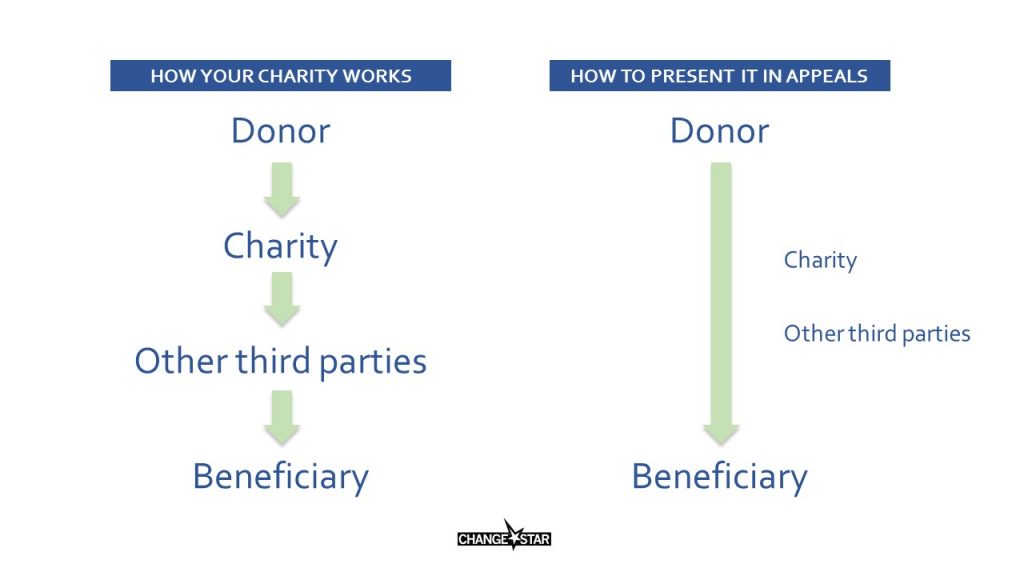
Last week I ran a very interesting and enjoyable* workshop for a wonderful non-profit organisation whose work I have long supported and admired.
The aim of the workshop was to show the charity how to write better direct response appeals – whether these are asking for money or encouraging people to take part in a campaign, and whether these appeals are sent by post or email.
The organisation is doing brilliant work and is leading the way in the search for a fairer, more sustainable world. Yet during the workshop, we recognised that they are currently failing to communicate this with supporters or the public in a way that will make them respond.
What’s the main problem with how they’re communicating their work?
They’re not talking about the beneficiaries.
Because they’re involved in broader political, campaigning and community engagement work rather than directly running an eye hospital, feeding starving children or treating injured pets, they seem to either lack the confidence to talk about the ultimate impact of their work on beneficiaries or have forgotten that this is why they’re ultimately doing their work.
As a result they focus their asks on things that are way too broad and fail to generate any emotion – for example, asking people to ‘donate £20 to fund a report we are writing’, or ‘donate £30 to fund our consultation work with local communities about housing’.
These are important pieces of work, but even the most enthusiastic of donors to this cause (like me) are likely to find this a little dry and uninspiring. And it’s not the work they do that’s the problem – it’s simply that the organisation has stopped too early when describing its chain of impacts.
They’re talking about instrumental things they do rather than going to the end of the chain of impact to the beneficiaries – to show what impact their work has on them. For example, as fundraisers and campaigners they could tell the story of a young family renting a squalid 1-bedroom flat because they’ve been priced out of the market in their area, and how the organisation could change their lives by helping local people like them to form community groups to buy abandoned land and build affordable housing on it. This could ensure their children have comfortable, warm homes to live in and safe neighbourhoods to grow up in – something we should all have a right to.
As you can see, stories like this bring colour, life and most importantly emotion to any cause – however abstract it may consider itself to be. And emotion always drives response – no matter how sophisticated you consider your audience to be. People give to people. They need to feel something – a sense of outrage, injustice, hope, fear – as this is what will spur them into action. And by far the most effective way to achieve this is to focus on the beneficiary – no matter what your cause.
Granted, it isn’t always easy to show the indirect impact on your work on beneficiaries when your part of the work is a bit removed from them, but your organisation must learn to do this if its fundraising is to become effective. The message needs to come from the top of the organisation that everyone must help to make this happen – for example, charity project workers need to collect stories about beneficiaries and how they’ve been affected by your work. It may take time to build this into your charity or organisation, but showing people what impact your organisation’s work really has ‘on the ground’ is essential to raise funds effectively.
The session reminded me how difficult some of the greatest and most valuable causes can find it to communicate their work in an engaging way if they are not right at the front end of service provision.
The advice for these organisations is simple – you should always go back to the beneficiary. Your job as a fundraiser is to connect the donor to the beneficiary and show them the impact they will have on their life. The charity is merely a conduit for the donor to help the beneficiary, and should be mentioned as little as possible in direct response appeals – as every time you mention it, it’s likely to be getting in the way of the donor seeing what impact they can achieve.
Here’s a graphic to summarise how to present your charity’s work to donors:
By Richard Docwra, Director, ChangeStar
*For me, at least


